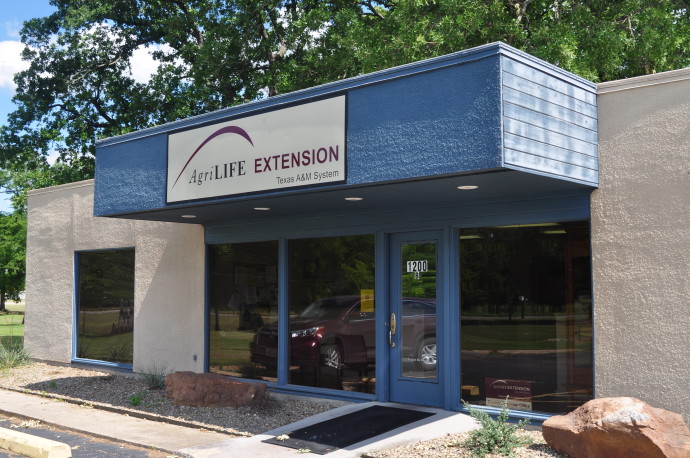 As our weather warms up, major attention is driven to our outdoor activities including enjoying our ponds and lakes. Because it is common to fish, the presence of pond weeds are often more noticed in warm weather when our families gathered to enjoy the outdoors. A common method to control weeds is using vegetarian fish. There are two main fish species used to control vegetation in ponds in Texas: the Mozambique tilapia and the grass carp. These two types of fish are considerable different in their habit, survival in ponds and food they eat. To learn more about the grass carp, I will share with you some basic information related to grass carp biology for you to learn of what grass carp do, and must important, what grass carp cannot do.
As our weather warms up, major attention is driven to our outdoor activities including enjoying our ponds and lakes. Because it is common to fish, the presence of pond weeds are often more noticed in warm weather when our families gathered to enjoy the outdoors. A common method to control weeds is using vegetarian fish. There are two main fish species used to control vegetation in ponds in Texas: the Mozambique tilapia and the grass carp. These two types of fish are considerable different in their habit, survival in ponds and food they eat. To learn more about the grass carp, I will share with you some basic information related to grass carp biology for you to learn of what grass carp do, and must important, what grass carp cannot do.
This information was release by Texas Park and Wildlife as part of the permit process to use grass carp in Texas (Grass Carp is a permitted species, a Texas Park and Wildlife permit is required to stock in ponds and lakes in Texas). The grass carp, also known as white amur, is a vegetarian fish native to the Amur River in Asia. The U. S. Fish and Wildlife Service introduced grass carp into the United States in 1963 for experimental purposes. Because this fish feeds on aquatic plants, it can be an effective biological tool for control of nuisance vegetation. Since 1992, Texas has allowed stocking of triploid grass carp, a sterile form of the species, with a permit from the Texas Parks and Wildlife Department (TPWD).
Facts
Triploid grass carp:
a. offer a biological alternative for aquatic plant control.
b. are sterile and will not reproduce.
c. are only distantly related to the undesirable European carp, and share few of its habits.
d. live for at least 10 years and probably longer in Texas waters.
e. grow rapidly and may exceed 60 pounds.
f. feed only on plants, not on fish eggs or young fishes.
g. feed from the top of the plant downward; however, where all submersed vegetation has been eliminated, the water can become turbid, as hungry fish eat the organic material out of the sediments.
h. have definite food preferences. Plants like water lilies, filamentous algae (pond scum or moss), muskgrass and Eurasian milfoil are not preferred. Bushy and American pondweeds and hydrilla are preferred foods.
i. are not effective for control of bulrush, filamentous algae (pond scum or moss), water primrose, coontail, Eurasian milfoil, or cattails.
j. go dormant during the winter and resume intensive feeding when water temperatures reach 68o F.
k. are difficult to catch with conventional fishing methods.
Stocking Considerations
1. Triploid grass carp are inexpensive compared to most other aquatic vegetation control methods.
2. Depending on plant types, plant density, and stocking rate, it may take several years to achieve control using triploid grass carp. Restocking, generally every 5 to 7 years, is needed for maximum effectiveness.
3. The types of plants triploid grass carp prefer may also be important for fish habitat and waterfowl food. Aquatic vegetation can be important in maintaining good fish communities and providing food for other wildlife species.
4. If the water body is overstocked, all submersed aquatic plants may be eliminated. Removing excess fish can be difficult.
5. If insufficient numbers of triploid grass carp are stocked, less-favored plants may become overabundant.
6. Stocking triploid grass carp may result in alga blooms and reduced water clarity.
Emigration Barrier
Triploid grass carp readily seek flowing water and often escape before controlling nuisance aquatic plants. Escapement of the stocked fish can reduce or eliminate their potential for plant control within targeted areas, and can threaten beneficial plants outside of targeted areas. Impoundments on permanently flowing creeks, or those that overflow frequently, should not be stocked with triploid grass carp unless they can be effectively screened.
Therefore, emigration barriers are required for many, and recommended for most, water bodies being stocked with triploid grass carp. In cases where emigration cannot be prevented, chemical or mechanical control of aquatic plants is recommended. With few exceptions, the best screening device for nearly all outlet types is the horizontal parallel steel-bar design. The orientation of the bars allows unrestricted passage of small debris, thereby minimizing maintenance, clogging, and flooding concerns. Bar thickness of ¼- to ½- inch is preferred. Round bar stock will facilitate debris passage.
For a spillway barrier, the horizontal bars are attached to vertical support posts (minimum ¾-inch diameter) spaced 4 feet apart. Horizontal bars should be spaced 2 inches apart. The barrier should span the entire spillway. Since triploid grass carp are excellent jumpers, barrier height should extend 2 feet above the normal high-water level. For capping a drainage pipe, a similar bar design should be used. Extending the bars 4-5 feet above the overflow pipe allows water to rise over debris and begin flowing again should the screen become clogged.
Welded wire and chicken wire are not effective as barrier materials. These types of materials readily clog with debris and the force of even a small amount of water can destroy the barrier. Clogged barriers may threaten the integrity of dams. For capping a drainage pipe, a similar bar design should be used. Extending the bars 4-5 feet above the overflow pipe allows water to rise over debris and begin flowing again should the screen become clogged.
For more information on this or any other agricultural topic, please contact the Hopkins County Extension Office at 903-885-3443 or email me at [email protected].

Mario Villarino DVM, Ph.D.
Hopkins County Extension Agent for Ag and NR
1200B Houston Street
Sulphur Springs, Texas 75482
903-885-3443






